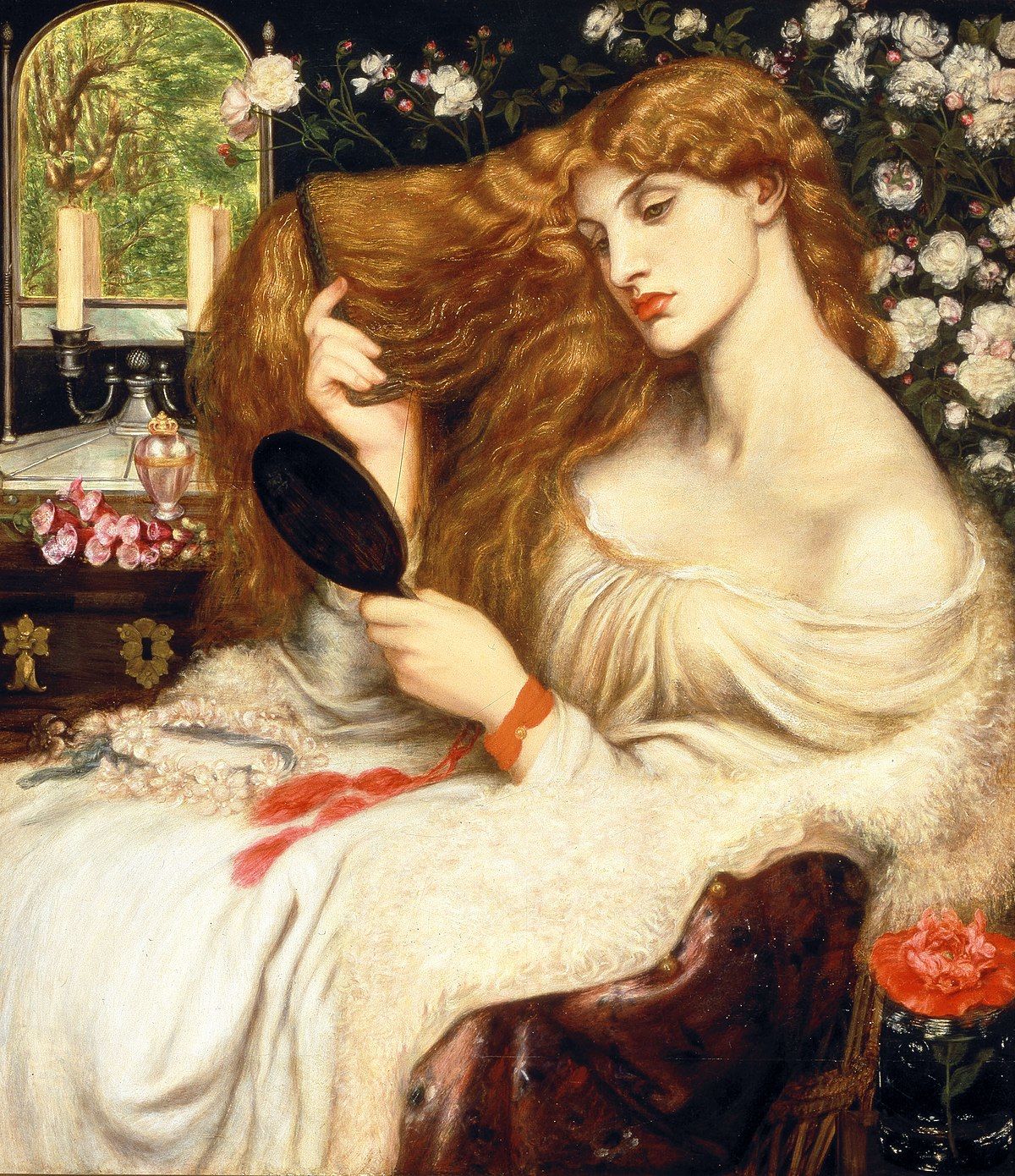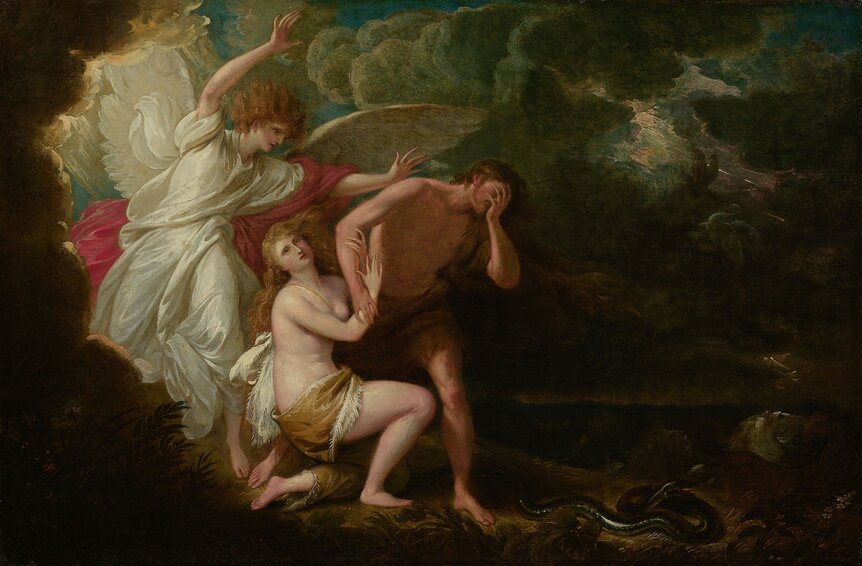Create a free profile to get unlimited access to exclusive videos, sweepstakes, and more!
She-devil: The female Satans of genre

Looking back over fiction of the last several hundred years, Satan is kind of all over the place. Let’s face it, this is one ubiquitous character. Basically any time someone is being tempted in classic literature, Satan is probably the one behind it, from Faust to Dante’s Inferno to Paradise Lost. As Satan is a fairly nebulous concept at heart, the different takes and portrayals have run the gamut across the entirety of fiction.
Yet, one thing we barely ever focus on is the fact that Satan is a shapeshifter, thereby essentially genderless. Say what you will, but Satan is fairly progressive in their understanding of gender politics — easily hundreds of years ahead of the curve, in fact! That said, though she appears a lot less frequently in genre, Lady Satan still shows up from time to time, causing problems and tempting the bejeezus out of everyone, from Dudley Moore to Brendan Fraser.
Satan... is Lilith?
Not really! Lilith is a figure from Judaic legend who was made of the same clay as Adam, rather than by his rib like Eve later would be. Lilith got annoyed by Adam almost immediately upon realizing that he expected her to be subservient to him, so she bounced and ended up hooking up with the entity Samael, who, like Lilith, is ethically ambiguous. In an awesome way. We’re not sure what the moral of this story is, because honestly, Lilith sounds awesome and everyone else in this story sounds like a jerk, except her new beau Samael and, of course, Satan, who completely backs Lilith up and lets her crash on his couch for a few millennia after she divorces Adam. This… isn’t in a book or anything, it’s just what we think happened.
Many, many wicked women of fiction are based on Lilithian legend. The femme fatale trope is about women who believe in manipulating and taking advantage of men, so in some ways that entire corner of genre is all about women exhibiting some strongly Satan-like tendencies, much like our girl Lilith does. Nowhere is this more obvious than in Josef Von Sternberg’s films with Marlene Dietrich in the 1930s, one of which is literally titled The Devil Is a Woman, but all of which feature a female character who strips men of their will and destroys them without rhyme or reason. This is most evident in 1930's The Blue Angel, a film in which Dietrich systematically dismantles the lives of several men and transforms them into weak shells of their former selves. Frankly, it’s pretty admirable. The downside of this trope is that it is working to instill a system of morality on women that is ultimately questionable. In short, these stories are explicitly intended not to warn men to control themselves but to warn women against seducing men.
So, Satan is... Elizabeth Hurley?
Yes! Or at least, Elizabeth Hurley played Satan once in a movie. Let’s rewind and start at the beginning. In 1967, comedian Dudley Moore starred in a film scripted by and also starring Peter Cook called Bedazzled, in which a suicidal young man is granted wishes by Satan. Of course, there is a catch every time, and so the man regrets his choice and seeks to cancel their contract. This is impossible because Satan is extremely good at contracts.
While in the first film the Devil is played by Cook and he is assisted by the embodiment of Lust as played by Raquel Welch, in the 2000 remake, the Devil is played by Elizabeth Hurley. While Cook’s take is highly memorable, Hurley’s is also great, and her comedic timing is sound. In either version, Bedazzled is a comedy, but in the second the protagonist’s awkwardness is really driven home in comparison to the incredibly smooth Hurley.
The most interesting thing in the remake, though, is the implication that a male God kicked a female Satan out of Heaven for the sin of Pride, which makes it possibly the most feminist take on Satan yet to date. When the story consists of two cosmic entities in an endless ethical dispute, it's interesting, but when Satan is meant to be a personification of the ill-will towards women throughout history, the story becomes brilliant in a way we were honestly not expecting from a remake of a Dudley Moore film.
Satan... is a cult film?In 1990's Mister Frost, we are introduced to a strange take on the Devil as a prolific murderer who is put into a mental health facility. He insists that he will only speak to the one woman doctor, so she begins treating him despite dealing with abundant sexism from her boss. The killer immediately insists that he is the real Devil, and over the course of the film, we discover that his intention is to convince her to murder him, at which time he will take over her body. Though we only see a female take on Satan for a moment at the end of this film, it completely hinges on how the gender identity of the doctor affects her life, her relationships, and her career. She falls into his trap in the end, but questions of autonomy and consent are prominent throughout.
Satan... is androgynous?
In 2004's Passion Of The Christ, Satan is portrayed as an androgynous figure. The emphasis is on an ability to transmorph and project a more unearthly, inhuman, essentially genderless quality. There’s no denying that the creep factor is way up on this rendition of Satan. Against type, they are not portrayed as sexual or sensual so much as truly malicious. They appear as a snake to taunt Jesus and later to outright torture him. Although this Satan certainly sees their comeuppance by the end as they are unable to tempt Jesus, the portrayal will stand out as being particularly memorable for those people out there that like their Satan no-hold-barred evil.
Of course, Satan has long since been considered capable of taking different forms and changing shape, as are most deities in nearly all religions. This is most prominently displayed when they appeared as a snake to tempt Eve. Even then, Satan was looking out for the ladies, just letting Eve know that she didn’t have to put up with Adam any more than Lilith had to.
Satan... is possibly a superhero?The Marvel universe has many different Satans to choose from, depending on your preference. Using the slightly less blasphemous title of "Hell-Lord" to describe their function, characters like Mephisto, Hela, Blackheart, and many others would all fall under the general category of being Satan, or at the very least, Satanic. As you may have guessed, we’re using the term loosely here, as much of the theological questions of the Marvel Universe are filtered endlessly through a superhero narrative, making them a different thing from the religious figure entirely.
One such “Devil” is Marduk Kurios, who had two children. The first was Daimon Hellstrom, who is perhaps best known for having once married Hellcat and kind of ruining her life in the process, but who has had a long, strange, superhero-adjacent history in the Marvel universe. The second is Satana, who is, thematically, all over the darn place. Importantly, though he posed as Satan, Kurios was actually just a particularly ambitious demon, so that kind of throws this whole thing out of proportion. Still, there’s a woman named Satana in the Marvel universe, and frankly, we think that’s worth addressing.
While Hellstrom rejected the teachings of his father, Satana was completely onboard and stoked to become a demon in Hell someday. This is one character whose motivations are not super coherent, though. She ends up hanging out with a Doctor Strange when he was a lowkey werewolf for a minute there. Satana ends up sacrificing her life to cure Strange’s lycanthropy, which is probably the last altruistic thing she’ll ever do, considering the result. She did come back from the dead long enough to marry Deadpool, but she also tried to sacrifice his immortal soul just so she wouldn’t have to deal with the consequences of her own actions. So, sometimes she’s a hero, sometimes she’s kind of the worst, and you never really know what you’re going to get with her. And isn’t that just like a Satan?
What if Satan was one of us? Just a stranger on the bus...
At this point, we’re pretty much just going completely off the rails here, but lest we forget the classic lesbian pulp title, 1966's Satan Was a Lesbian. Past the cover and the incredibly bold claim it makes, Satan really doesn’t show up too much in that story, a book with a low print run that was only recently made available to read online after years of appearing on refrigerator magnets across the world. While the book is obviously pure fiction, it is still important to acknowledge the Queer Satanists of the world. For instance, the lesbian poet Renee Vivien regularly wrote of Satanism as it related to her own personal philosophy of hedonism. She believed Satan to be the protector of homosexuals the world over. It is true that, unlike many religions, both theistic and LaVeyan Satanism accept homosexuality as part of their philosophy. Frankly, Satanism sounds more appealing the longer this article goes on.
Satan has had a sliding scale approach to feminism over the countless stories in which they have appeared and that portrayal has varied wildly over the centuries, but there’s no doubting that much of Satanism is based in the power of the individual overcoming unjust, oppressive systems, which could theoretically place the whole belief system in line with feminist theory. Though it would not be fully accurate to refer to Satanism’s best-known proponent Anton LaVey as a feminist, there have been plenty of women taking up the slack in that department. People dedicated to social justice, LGBTQIA rights, anti-racist action, and respecting the Earth seem to make up a big portion of those who practice Satanism in the modern world. Let’s face it, this is kind of the best case scenario for Satan, so we're here for it.






























